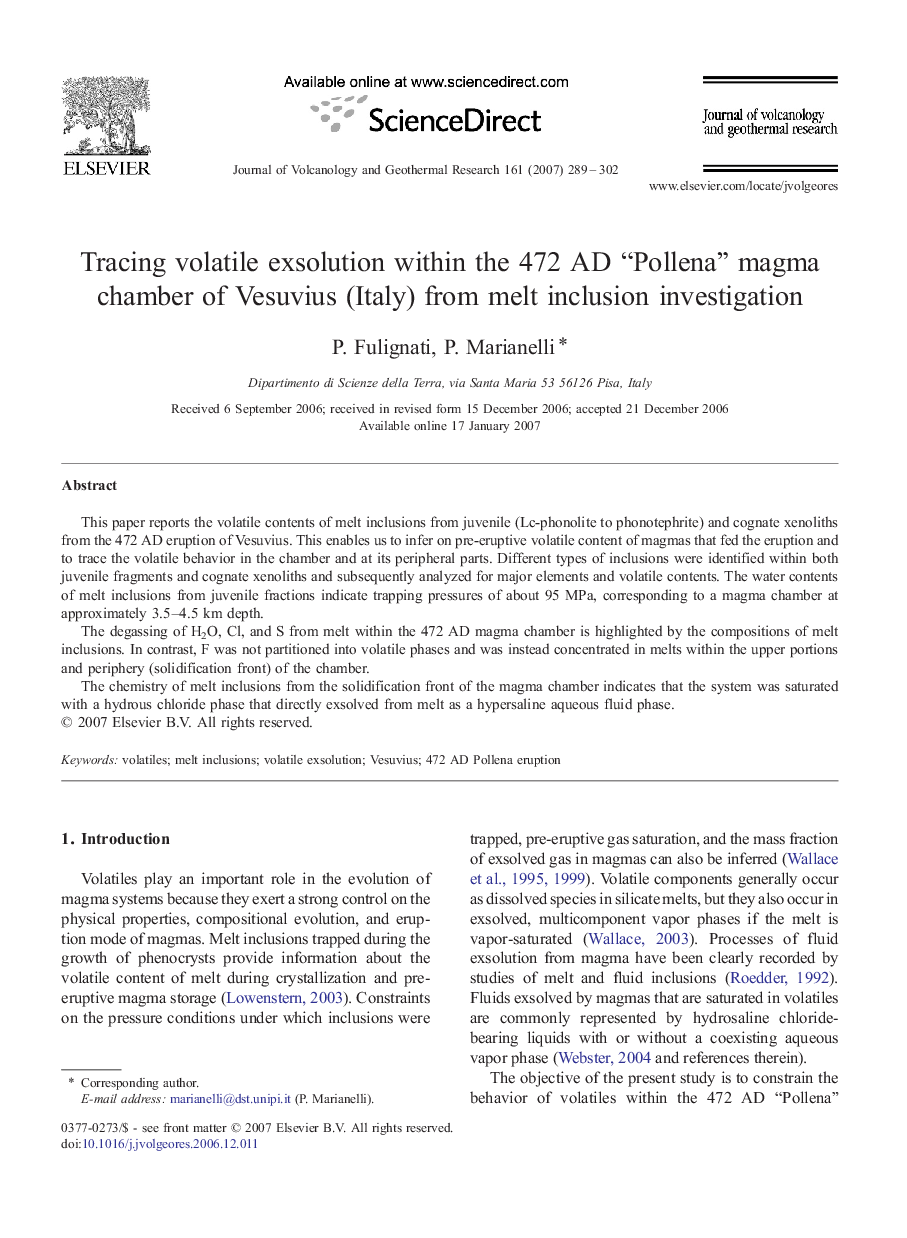| Article ID | Journal | Published Year | Pages | File Type |
|---|---|---|---|---|
| 4713859 | Journal of Volcanology and Geothermal Research | 2007 | 14 Pages |
This paper reports the volatile contents of melt inclusions from juvenile (Lc-phonolite to phonotephrite) and cognate xenoliths from the 472 AD eruption of Vesuvius. This enables us to infer on pre-eruptive volatile content of magmas that fed the eruption and to trace the volatile behavior in the chamber and at its peripheral parts. Different types of inclusions were identified within both juvenile fragments and cognate xenoliths and subsequently analyzed for major elements and volatile contents. The water contents of melt inclusions from juvenile fractions indicate trapping pressures of about 95 MPa, corresponding to a magma chamber at approximately 3.5–4.5 km depth.The degassing of H2O, Cl, and S from melt within the 472 AD magma chamber is highlighted by the compositions of melt inclusions. In contrast, F was not partitioned into volatile phases and was instead concentrated in melts within the upper portions and periphery (solidification front) of the chamber.The chemistry of melt inclusions from the solidification front of the magma chamber indicates that the system was saturated with a hydrous chloride phase that directly exsolved from melt as a hypersaline aqueous fluid phase.
